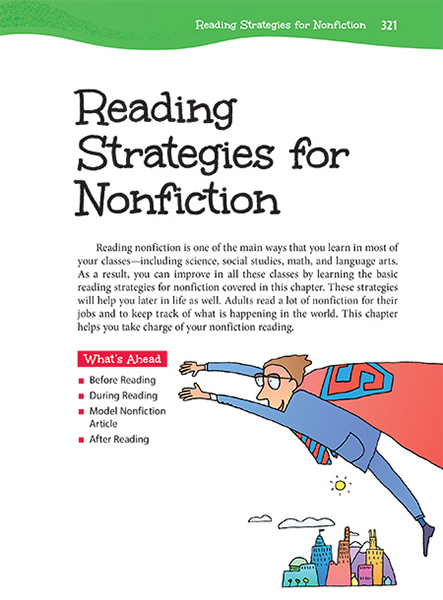Page 321 from

Start-Up Activity
Have your students open to a particular page in their social studies or science text. Ask these questions:
- What is the page about? (Example answers: "the water cycle" or "the rock cycle")
- How do you know what the page is about without reading it? (Example answers: "that's what it says at the top" or "they have a picture of lava cooling")
- What other clues tell you what a page is about before reading? (Example answers: "headings," "bold words," "definitions," "captions and/or tables")
On a whiteboard, write down all of the clues that students identify. Point out that searching for visual clues is one strategy that can help students preview a nonfiction text. This chapter provides many other strategies for reading and learning from nonfiction.
Think About It
“It usually helps me write by reading—somehow the reading gear in your head turns the writing gear.”
—Steven Wright

Start-Up Activity
Have your students open to a particular page in their social studies or science text. Ask these questions:
- What is the page about? (Example answers: "the water cycle" or "the rock cycle")
- How do you know what the page is about without reading it? (Example answers: "that's what it says at the top" or "they have a picture of lava cooling")
- What other clues tell you what a page is about before reading? (Example answers: "headings," "bold words," "definitions," "captions and/or tables")
On a whiteboard, write down all of the clues that students identify. Point out that searching for visual clues is one strategy that can help students preview a nonfiction text. This chapter provides many other strategies for reading and learning from nonfiction.
Think About It
“It usually helps me write by reading—somehow the reading gear in your head turns the writing gear.”
—Steven Wright
